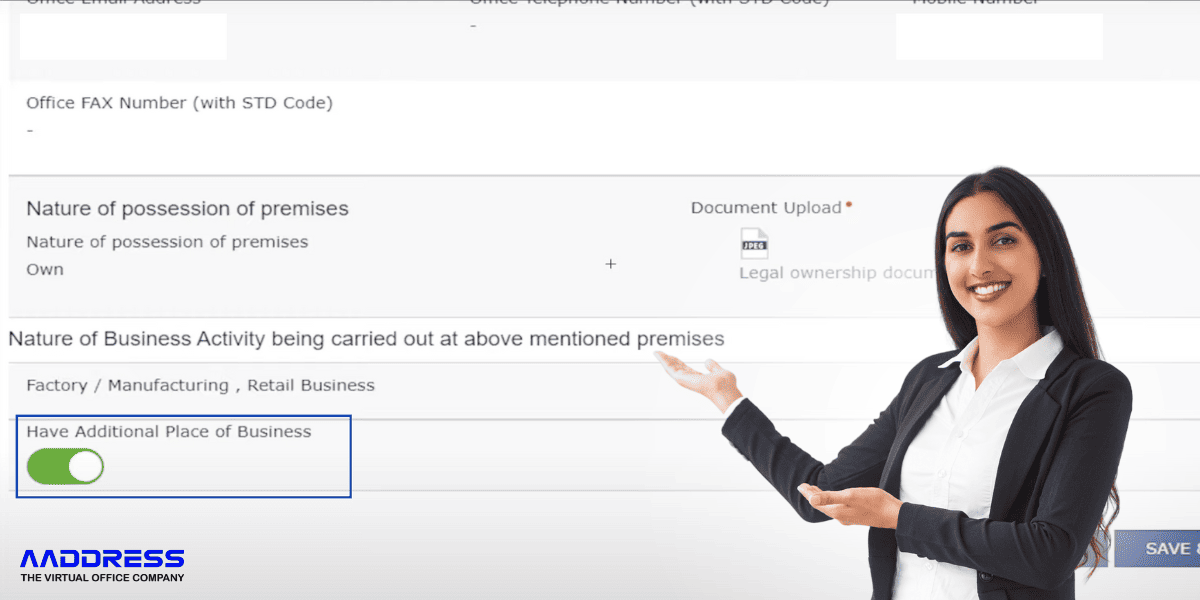Don’t just get a virtual office—let us help you build your business with our expert resources.Learn More
Understanding Flipkart Seller Fees: How Much Does Flipkart Charge from Sellers?

Highlights:
-
- Flipkart holds a 51% market share in India, surpassing Amazon's 32%.
- The company reported double-digit revenue growth in Q2 FY25, contributing to Walmart's international revenue of $29.6 billion, up from $27.6 billion in the previous year.
- Flipkart's grocery business has experienced remarkable growth, with a 50% year-on-year increase.
- As of March 2024, Flipkart recorded over 167 million monthly visitors, making it one of the leading platforms in India.
Introduction
Have you ever wondered how much it really costs to sell on Flipkart?
If you’re considering opening your virtual storefront on one of India’s largest e-commerce platforms, understanding the seller fees is crucial to your success.
You might think selling online is as simple as listing a product and waiting for buyers to show up, but in reality, there’s much more to it.
For any business, whether you’re a solo entrepreneur or a well-established company, knowing your costs is the key to making smart financial decisions.
Selling on Flipkart opens doors to millions of potential customers, but like any business, it comes with its own set of expenses.
From shipping fees to commissions and everything in between, being well-informed about the cost structure can help you optimize your pricing, maximize profits, and avoid any surprises later.
In this blog, we’ll break down all the details of Flipkart’s seller fees so you know exactly what to expect. Ready to dive into the numbers and uncover how much Flipkart charges its sellers? Let’s get started!
Why Understanding Flipkart Seller Fees is Crucial
If you’re a seller, every rupee counts. But how do you ensure your pricing covers not only your product costs but also the fees Flipkart charges?
Whether you’re new to online selling or looking to fine-tune your existing strategy, understanding Flipkart’s fee structure is essential. These fees directly impact your profit margins and, ultimately, the sustainability of your business.
1. Flipkart Commission Fee
The commission fee is Flipkart's cut from every sale you make on the platform. This fee is based on the category of your product and usually varies between 5% and 25% of the selling price.
How it works: When you sell an item, Flipkart deducts the commission fee before crediting the remaining amount to your account. If you sell a product for ₹1,000 and the commission fee is 10%, Flipkart will take ₹100, and you will receive ₹900 (minus other applicable fees).
Key Point: The commission fee is subject to GST, so you’ll also need to factor in an additional 18% GST charge on the commission amount.
2. Shipping Fee
Flipkart offers end-to-end logistics support for sellers through its in-house logistics service, Ekart. The shipping fee depends on factors like the product's weight, size, and the shipping location (local, zonal, or national).
Breakdown of Shipping Fee:
- Local Shipping: Lower charges for deliveries within the same city or nearby.
- Zonal Shipping: Charges increase for shipments within the same state or region.
- National Shipping: Highest charges for deliveries across different states.
Important Consideration: Sellers can offer free shipping to customers, but ensure to include the shipping cost in the product price to avoid absorbing the entire cost yourself.
3. Fixed Fee
The fixed fee is a charge applied per successful order, based on the price of the product. The fee varies by product price category. For example:
- Below ₹500: ₹10-30
- ₹500 - ₹1,000: ₹30-60
- Above ₹1,000: ₹60-100
4. Collection Fee
This fee is for handling payment transactions and is typically 2% of the order value.
Collection Fee Breakdown:
- Calculated on total order value (product price + shipping charges).
- Subject to 18% GST.
For example, for an order of ₹1,000, the collection fee would be ₹20, plus ₹3.60 in GST, making the total collection fee ₹23.60.
5. Cancellation Fee
If you cancel an order after it has been placed, Flipkart will charge a cancellation fee, which varies based on the product and order details.
For example, canceling an order worth ₹1,000 may result in a cancellation fee of ₹50-100.
6. Returns and Refunds
Returns are part of the online selling experience. When a customer returns a product, the seller is charged a return shipping fee. Sellers may also incur reverse logistics costs and restocking fees in some cases.
Return Fee Breakdown:
- Return Shipping Fee: Sellers pay for shipping the product back.
- Restocking Fees: If a product is returned due to quality issues, additional fees may apply.
7. GST on Flipkart Fees
All Flipkart fees (commission, shipping, collection, fixed fees) are subject to 18% GST, which will be added to your deductions.
How to Calculate Total Flipkart Seller Fees
Here’s an example of how fees are calculated for a product sold at ₹1,000:
- Commission Fee (10%): ₹100
- Shipping Fee: ₹40
- Fixed Fee: ₹50
- Collection Fee (2%): ₹20
- GST on Fees: ₹38
Total Deductions: ₹248
Net Earnings: ₹752
Strategies to Manage Flipkart Seller Fees
Here are some strategies to help you manage Flipkart’s seller fees effectively:
- Price Products Strategically: Ensure your prices cover both costs and fees.
- Bundle Products: Increase your average order value to reduce the impact of fees on individual items.
- Offer Free Shipping: Roll the shipping fee into your product pricing to entice more buyers.
Tips to Optimize Flipkart Seller Fees
Here are some strategies to help you minimize Flipkart fees and maximize your profits:
- Choose the Right Product Category: Strategically select your product category to reduce commission rates.
- Optimize Shipping: Use local fulfillment centers to reduce shipping costs.
- Monitor Returns: Minimize product returns to avoid reverse logistics fees.
- Use Sponsored Ads Wisely: Advertise only high-margin products to maximize returns on investment.
Here's a quick video guide on how much is Flipkart Seller Fees
Integrating Virtual Offices into Your Flipkart Strategy
Are you a Flipkart seller struggling to streamline operations as your customer base rapidly expands? You’ve built a small team to handle sourcing, listing, and order fulfillment, but maintaining a professional appearance while scaling up can feel overwhelming. So, how you can continue to grow without the hefty overhead costs of a traditional office space?
Instead of leasing a costly office space in a city like Delhi, Mumbai or Bangalore, you could opt for a virtual office. This virtual setup gives you a business address, mail handling, and even meeting rooms when needed, all at a fraction of the cost. Now, when you register on Flipkart or deal with suppliers, you project a professional image while saving on overhead.
Virtual Offices: A Smart Solution for Flipkart Sellers
As you dive into the world of online selling, especially on platforms like Flipkart, you might find yourself juggling multiple responsibilities—inventory management, order fulfillment, customer support, and financial planning. In the midst of it all, having a physical office space may not seem practical, especially for smaller businesses or solo entrepreneurs.
Here’s where virtual offices come into play. If you’re running your business from home or want to project a professional image without the high costs of a traditional office, a virtual office for E-commerce can be a game-changer.
Why Consider a Virtual Office as a Flipkart Seller?
Here are some advantages of opting a virtual office
Cost-Effective: Renting a physical office can add significant overhead costs to your business. With Flipkart seller fees, inventory, and logistics expenses already on your plate, adding office rent can cut into your margins. A virtual office gives you the best of both worlds—an official business address without the hefty rent.
Professional Image: Even though you're selling online, having a professional address adds credibility to your business. Customers feel more confident buying from sellers that appear established and trustworthy. Virtual offices offer you a business address in prime locations, making your operation look more legitimate to both customers and vendors.
Compliance with Flipkart's Requirements: Platforms like Flipkart often require businesses to provide a valid business address for registration. With a virtual office, you can meet this requirement without renting a physical space. This is especially beneficial if you’re operating your Flipkart business remotely or don’t have a storefront.
Mail Handling and Customer Service: Many virtual office providers also offer mail handling services. This means you can get all your business correspondence delivered to your virtual office address, and in some cases, even have your calls answered professionally. It can save you time and give you peace of mind while focusing on growing your Flipkart store.
Expanding into New Markets: If you plan to expand your business across multiple regions in India, having a virtual office address in key locations can be a strategic advantage. It can give you a presence in multiple cities without the logistical complexity or cost of physical offices.
Conclusion
Selling on Flipkart offers tremendous potential, but success lies in understanding and managing the costs involved.
By being aware of Flipkart’s fee structure—commission, shipping, collection, fixed fees, and GST—you can plan your pricing and operational strategy to maintain profitability.
Are you ready to sell on Flipkart? Now that you’re equipped with the knowledge of Flipkart seller fees, you can make informed decisions, boost your margins, and scale your business on one of India’s leading e-commerce platforms.
Want to know how to become a seller on Flipkart? Here is the complete guide for you on how to become a seller on Flipkart.
Subscribe To Our Newsletter
Conquer your day with daily search marketing news.
Most popular Blogs
GST 2.0 Explained: What Will Get Cheaper for Indian Consumers in 2025?
India is about to reform its goods and services tax (GST) since its introduction in...
Read Full ArticleReading Time: 5 mins.Top 5 Locations in Delhi to Set Up Your Virtual Office
When you start a business in Delhi, there's always that one uncle or friend who...
Read Full ArticleReading Time: 5 min.How to Start Water Bottle Business in India: A Practical Guide
Starting a water bottle business in India can be a smart and rewarding move. ...
Read Full ArticleReading Time: 4 min.How to Add Additional Place of Business in GST Online (2025 Guide)
Adding an additional place of business in GST is mandatory for each business if they...
Read Full ArticleReading Time: .



